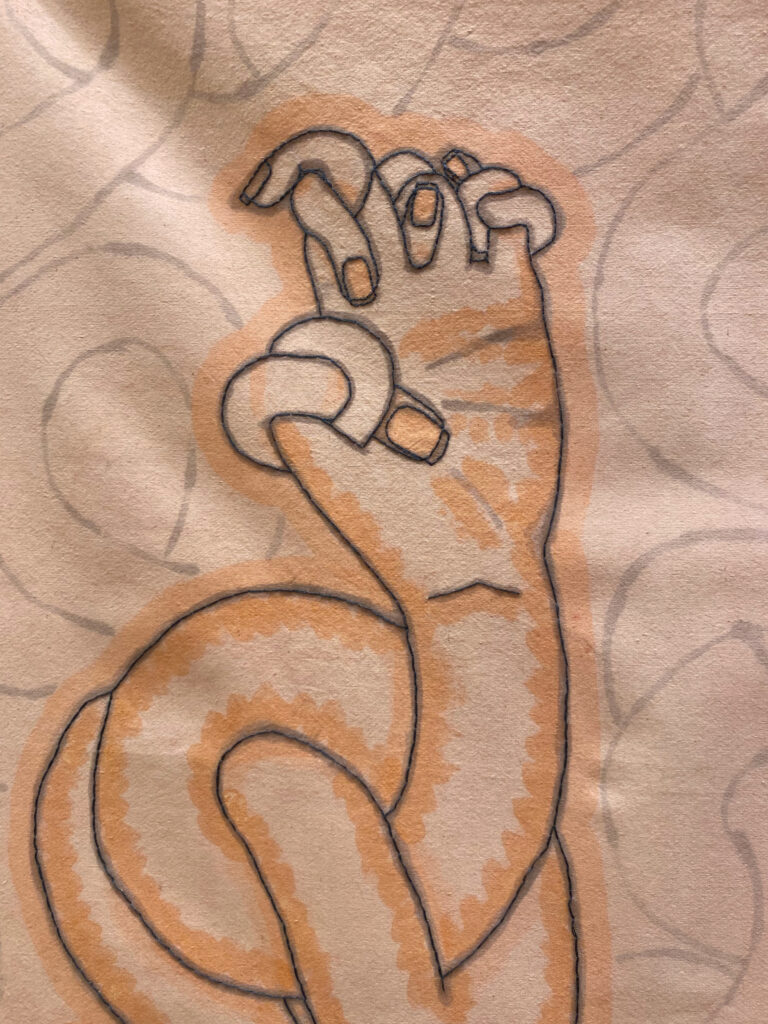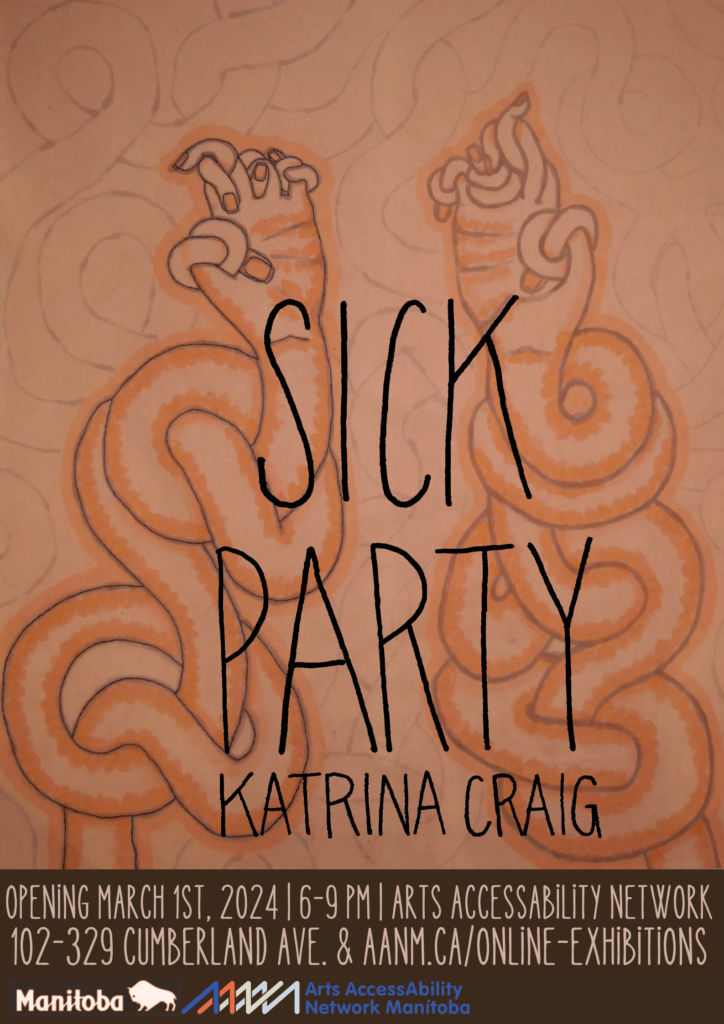ARTIST STATEMENT
Sick Party explores invisible illness and the ongoing pressure to perform ‘wellness’ in everyday life while feeling anything but well. The figures in Sick Party are arranged clumsily to resemble a human form, limbs and necks stretched, knotted, and tangled. The smile and eyes are hollow, a facade to hide within.
The performance of wellness initially served as a way to escape from bodily experiences but slowly transitioned into an amorphous pressure. When the grueling performance ended, space was made to listen to the subtle somatic language of the body and nervous system, reconnecting me with my intuition and ability to accept care from others.
The works in Sick Party are made using a natural dye technique called mordant painting. A mordant (metal salt) is used as a fixative to adhere the pigment to the fabric. These metal salts can be combined with a thickener and painted onto the fabric surface. When the fabric is dyed, the image appears on the fabric as the dye particles adhere to the mordant painting, and the background colour remains empty.
BIO

Katrina Craig is a visual artist and craftsperson living in Winnipeg, Manitoba on Treaty 1 territory. Originally from Prince Edward Island, Katrina Craig attended the Nova Scotia College of Art and Design (NSCAD) receiving a Bachelor of Fine Arts in Textiles and Fashion.
Her background in textiles and fashion are found in her work through her use of fibre, three dimensional soft sculpture forms, and the use of textile techniques and needlework in her mixed media projects. While Craig’s work has a continuing thread of textiles, her work often engages with other modes of making including: photography, video, hand lettered text, drawing and writing.
Craig uses an innate feature of craft based practice: time, labour and process, as a means to explore the intersection of the body and the mind. Her work often references or interacts with the body. It may be worn, referenced in the artwork’s form, or the work may be draped overtop of wire body forms. Craig utilizes her own body through recording herself working bit by bit on her projects, often transforming everyday objects into new structures using needlework, weaving, or other textile techniques.
Exploring topics such as chronic illness, grief, change and transformation, Craig uses visual metaphor to express the subtle changes and invisible labour of internal life. She gives particular focus to how these internal changes translate into and are encouraged by somatic experience in the body.

dye mordant painting with onion skins and marigolds on cotton, hand dyed wool
37” x 20”
2023
$950
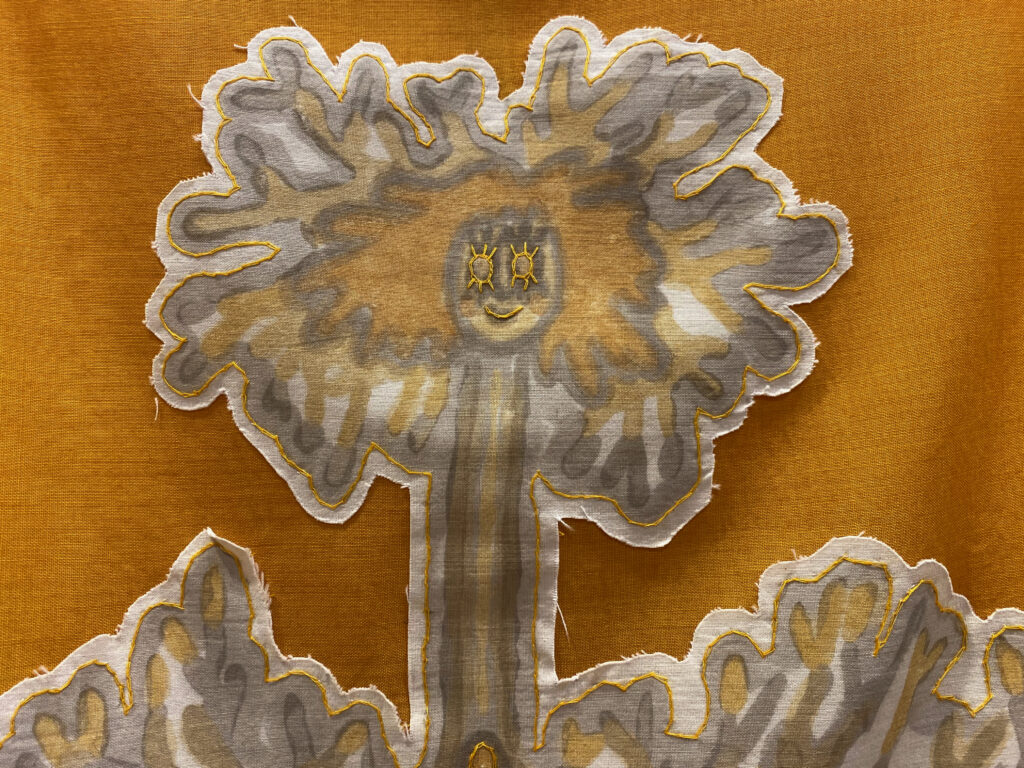
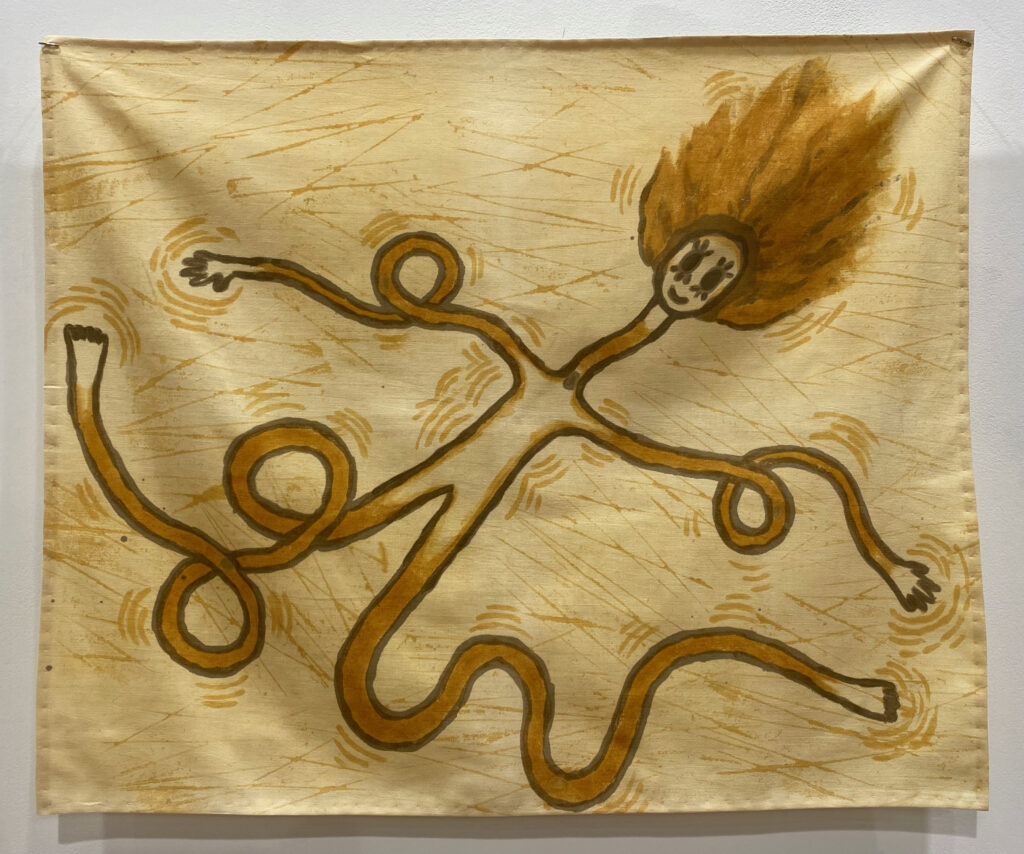
Natural dye mordant painting with onion skins
18” x 24”
2023
$300

Natural dye mordant painting with weld on cotton
54”x43”
2023
$1250
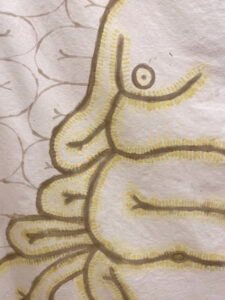
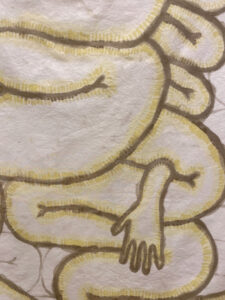

Natural dye mordant printing with coreopsis on cotton
104” X 20”
2023
$700
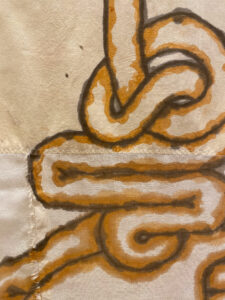


Natural dye mordant printing with cochineal on cotton, repurposed cotton poplin, wooden beads
40” x 30”
2023
$1250



Natural dye mordant painting with logwood on cotton
54”x43”
2023
$1250

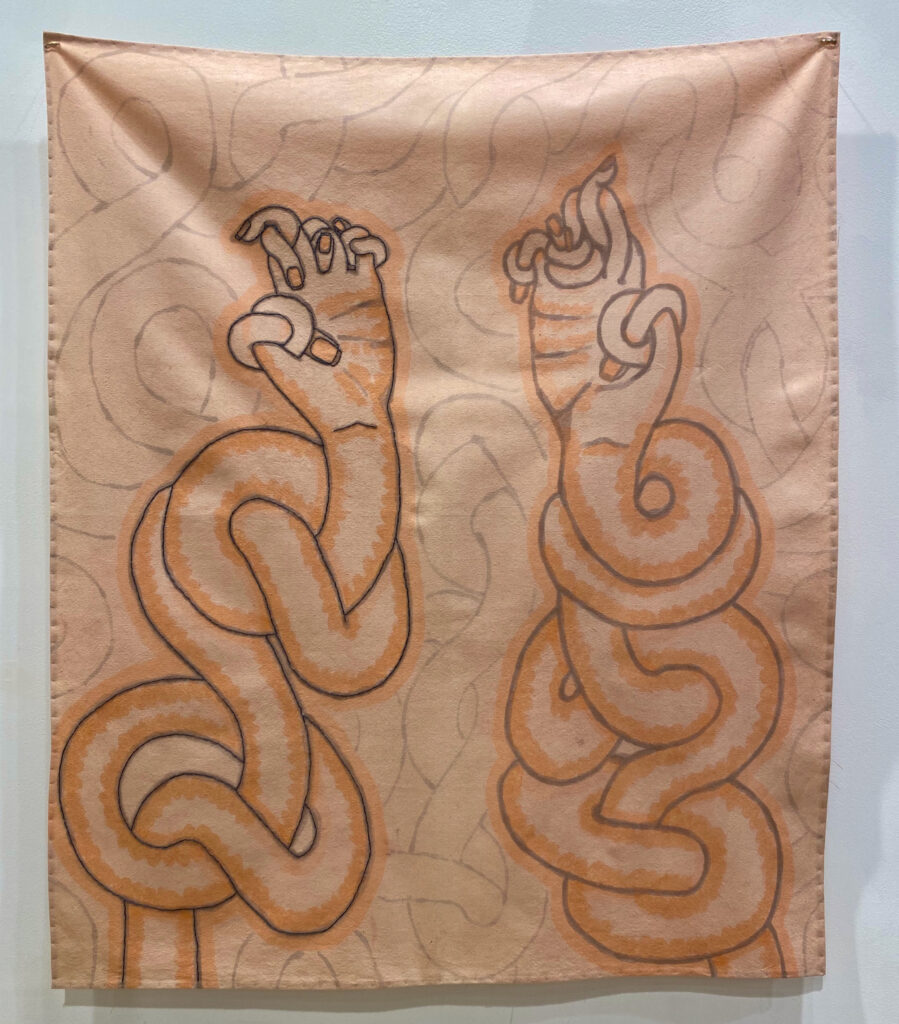
Natural dye mordant painting with madder and weld on cotton
24” x 36”
2023
$950
